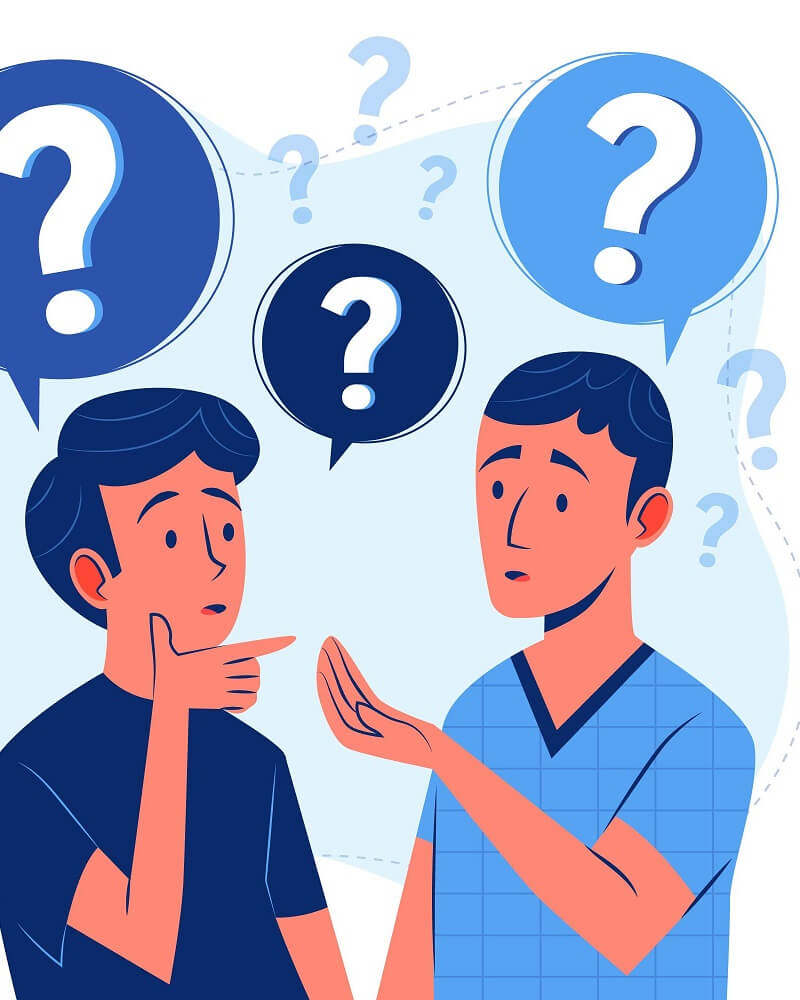Book Blaster Issue 2
Scientific studies help explain PhotoReading
Research has shown that you do have an in-built photographic memory. I’m sure you’ve heard stories of witnesses to a crime being hypnotised and telling the interviewer the registration plate of the getaway vehicle, even though they didn’t previously recall even noticing it. This goes to show that you take in far more information than you think — it’s just that your brain is designed to feed you just the amount of information you need without overloading you.
Here’s something that happened to me recently. A while back, I was invited to appear on Radio Newcastle to talk about PhotoReading. the day before the interview I asked myself for some research information that might explain and validate PhotoReading. I immediately thought of the book Accelerated Learning by Colin Rose which I PhotoRead once, a year ago, in April 1995, and hadn’t looked at since. I knew the info would be there.
I also saw the number eight, and I had the feeling that the information I needed was two thirds of the way down a left hand page. I quickly found the book, and within 30 seconds I located the relevant paragraph — two thirds of the way down a left hand page as I had thought. Bizarrely, it was on page 62:8 six plus two is eight, the number I had thought of.
This is what the paragraph said: A researcher called Ralph Haber published an article in the May 1970 issue of Scientific American. He showed people 2,500 images, one every 10 seconds over a seven hour period then, over the next three days, he tested them on their recall in the following way: he presented them with two pictures side by side and asked them to choose the one they thought was in the first 2,500. the second was a brand new picture. the subjects were tested with 300 sets of pictures and recognised between 85 and 95% of the original pictures correctly.
Studies since then have got results as high as 99% correct, proving the almost infinite capacity of the mind to absorb information effortlessly. So it’s no surprise that PhotoReading produces measurable results with a few hours of training. Keep up your PhotoReading!

Paul Scheele on his office balcony in Wayzata, Minnesota
 Don’t practice — just do!
Don’t practice — just do!
It’s easy to put off PhotoReading by thinking that it’s best to progress further through the Course first — or just experimenting with a few books casually. I’d recommend you dive straight in and PhotoRead books that capture your interest, regardless of your perceived level of knowledge of the PhotoReading steps.
If you aren’t PhotoReading at least four books a week, it’s because you haven’t made it a priority. Luckily, Paul Scheele, creator of the PhotoReading Course, has produced a Paraliminal title that may get you back on track.
Get Around To It helps you re-evaluate your priorities so that you actually want to do something that you’ve been putting off. The recording helps put everything into perspective. I used it for the first time on a Saturday for a project I didn’t want to tackle. It just seemed too daunting. On Monday morning at around 11am I suddenly realised that I was getting the project done. I hadn’t even thought of the negative energies I had built up around the project in the past. there were no anxieties, and no negative self-talk. I simply started the project and worked through it. I was amazed.
As it turned out, the recording also became a strong force for motivation. It doesn’t talk you into doing something — it motivates from within. Many people actually feel a deep desire to get the project done after listening to the recording. But it can’t get you to do something you don’t want to do.
Linda Florence, one of the customer service reps at Learning Strategies, had been putting off turning a section of her basement into an art studio. On listening to the recording, she realised she didn’t want to be cooped up in the basement after all — she wanted more windows and more light. the next thing she knew she was hard at work on the third floor of her house!
One side of the recording is for specific situations, such as cleaning the garage, while the other side is for procrastination in general. If you have a habit of putting things off, this second side may be a good way to motivate you into positive action. Whereas you will probably experience results immediately for specific situations, you may need to listen to the general side several times over a period of a few weeks to ensure that you are doing the things that need to be done.
PhotoRead for therapy!
Late one night in January 1996 I climbed into bed and decided to read a few pages of the Tao Te Ching, a book of Chinese wisdom by Lao Tsu (the saying ‘Every journey of a thousand miles starts with a single step’ comes from this book). Then I decided to PhotoRead it instead, so I very quickly got into a relaxed state by closing my eyes and breathing a little deeper. Then I stated my purpose which was to get an relevant insight that I could apply in my life now. I then went into PhotoFocus and turned the pages, one every second or so. At the end of the book I closed my eyes and told myself that everything I had PhotoRead had made a lasting impression on my inner mind and was available to me. then I turned out the light and went to sleep.
A few nights later I picked up the book again to read it normally this time — and the number 47 popped into my head. So I turned to the 47th section and went all goosepimply as the paragraph there really applied to my life at that moment. then my mind threw forward the number 36, and the 36th section again applied to me, but not as much as the 47th. Nothing else appeared, and the need to read the book from page one had vanished, so I turned out the light and went to sleep!
If I ever feel ‘stuck’ with a problem in my life, I must remember to pick up the Tao Te Ching again and see if my subconscious can refer me to some further relevant words of wisdom! The Tao Te Ching is a fabulous little book. This new translation by Stephen Mitchell is my favourite.
Reading books can now be a joy — not a chore
Sally Davies is co-director with David Shephard of the Performance Partnership which runs training courses in NLP, Hypnosis and Time Line therapy’.
Said Sally recently, “Before I got the PhotoReading Course I had some real problems around reading because of the way I was taught at school. I learned to spell phonetically which slowed my progress down massively. I’ve only worked through three of the eight PhotoReading lessonss so far, yet my reading speed has increased dramatically, and my retention has gone up too. I also go into a more relaxed state as I’m reading now, rather than getting all up tight about studying.
Just last weekend I bought 10 books. I’ve read two already at normal speed, and I know I’ll read the rest soon. Previously I had to read every book three times, so PhotoReading has made a major change.
I found the Star of Wonder exercise to be a total nightmare at first. But the more I did it, the better I got. I quickly proved to myself that I could re-educate my brain in a short space of time.” Do make sure you do the Star of Wonder exercise if you haven’t done it already. It’s in the Workbook, and it’s a real eye-opener.
Funny things happen…
A while back, I was staying with my friends Howard and Bev Tinker who didn’t know anything about PhotoReading. Howard had been doing an NLP Practitioners course (NLP stands for Neuro Linguistic Programming: the new psychology of excellence). He wanted to demonstrate some of the power of NLP, and started leafing through a book called Trance Formations by Richard Bandler, looking for a clever letter he wanted to read to me.
He couldn’t find it anywhere, so I told him to stop and think of a number between one and nine. He said nine. I asked for a second number, and after a long, confused pause he said nine again. I asked him to look at page 99, and he replied with frustration that he’d only read to about page 85, so the letter couldn’t be there. I wanted him to check page 66, but Howard first checked page 18 (9+9) — then found the letter on page 66! He was incredulous! The numbers that Howard thought of came from his subconscious which knows all the answers. He’s just never been taught to trust that part of himself. Not surprisingly he’s amazed at what happened, and eager to develop his skills more.
I had a similar experience myself about five years ago. I was playing Trivial Pursuit and was asked the question: “Where are Broca’s canals?”. Immediately the words “Broca’s brain” quietly tripped off my tongue. Then I said more certainly “On Mars”, paying no attention to what I’d just said, and stating something more ‘logical’! The correct answer, not surprisingly, was “the brain”. My first reply had come from my subconscious, and the second from my conscious mind. Now I’ve learned to PhotoRead I trust the first voice more, no matter how daft it may sound!
PhotoReading letters — send yours today!
Dear Chris,
[see Issue 1] has provided me with sufficient impetus to write in and let you know how I’m doing with the PhotoReading Course. What with all the other products I’ve purchased from LifeTools it hasn’t always been easy finding time for the course. However at the time of writing, I’m in the process of making a concerted effort to master PhotoReading. I’ve outlined below a few of my experiences so far.
The Dictionary Game: I’ve had a modicum of success with this game. What I’ve discovered is that quite often I know that I’m right and tend to get a string of these successes before I get excited and start to analyse my success. This switches on the conscious mind which is eager to get involved, but unfortunately not up to the task. In order to master this game I’m trying to recognise the difference between an answer provided by my unconscious and a guess from the conscious mind.
Other Games: After a while the dictionary game gets a little tedious, yet the leap to PhotoReading books still seems large. A possible intermediary step would be to get a friend to quickly flick through the book you’re PhotoReading and make up a number of multiple choice questions. This is similar to the Dictionary Game in that you let your inner mind guide you to the answer, and this will build confidence that the information in the book is implanted in your inner mind.
Lucid Dreaming (where dreams appear as real and solid as reality): I have fairly regular lucid dreams and would be grateful for any tips you might have on accessing material that has been PhotoRead once I have gone lucid. This state of consciousness within the realm of the unconscious would seem to be the ideal state for activation. Hence if a technique for easily accessing material could be devised it would act as both a powerful aid to the PhotoReading system and a great convincer of the efficiency of PhotoReading.
I remain an avid user of the MindLab mind machine and hope it will help me master the Course. I will drop you a line of any success I may experience.
Yours, a satisfied customer,
Simon Burbridge, Chorleywood, Herts
With lucid dreaming try reciting the name of the book you want to have a lucid dream about before you go to sleep, or write the title on your real hand then read the back of your dream hand in the lucid dream. I’m personally not convinced of the value of lucid dreaming for activating books I’ve PhotoRead. I’m sure I’d get some fascinating insights I may not have got from daily work — and it’s not entirely practical to rely on dreams! I need to PhotoRead during the day and get results there and then, either by using the PhotoReading techniques on their own, or using my MindLab to help me get into a deeper state of relaxation so the PhotoReading becomes more effortless and I get in a more right brain and playful mood.
Dear Chris and great team,
I’ve just raced through the PhotoReading Course, eager to develop this fantastic skill. What a gift from Paul Scheele! Thank you for supplying it and the great service far above the ordinary — you’re prompt, listening and helpful. I know I’ve spoken to Chris, Ian and Jeff. I’ve started PhotoReading and I’ve had spontaneous activation — things just coming into my mind in relevant situations. Wow! Unbelievable yet amazing and true. I can’t wait to use it more. I’m studying with the Open University for a psychology degree and will use it there in conjunction with the MindLab which I got back in November 1995.
I use the MindLab almost daily and I’m excited about the possibilities (73% on first essay) for growth and learning. Photo Reading and MindLab — what a combination! I can foresee lots of A’s in my course work and lots of interests developed faster and wider.
I’ll let you know of further developments and wows with Photo Reading and the MindLab. I would love to talk more on all this — but I want to go and study more with these great tools.Thanks for the friendly and fast service. Look forward to more of it.
Yours gratefully,
P Barker, Surbiton, Surrey
“Almost word for word!“
Pete Bissonette is the President of Learning Strategies which publishes the PhotoReading Course and the excellent Paraliminal CDs in the States.
Not too long ago he was invited into the studio of KSTP radio and offered six books for an on-air PhotoReading challenge. He PhotoRead first a book called Integrity. Said Pete: “I got all these sensations about the political undercurrents in the book. the radio host confirmed this later as he’d read the book himself, and told the listeners that I could never have realised this from just reading the blurb on the back cover. I abandoned this book and selected Headache Relief for Women.
I spent about 35 minutes doing an activation. After going through the book twice I didn’t feel I knew the content at all, but on the third and fourth time through I started to understand it.”
Back in the studio the host started with: “Tell me about menopause and headaches.” Pete’s first response was “oh, no” but then instantly he began recalling information on diet — foods that promote headaches, foods that alleviate them, the best type of exercise and when in a woman’s cycle is it most advantageous to exercise, how to chart headaches, and so on. The host said on air, “You are almost re-reading this page. This is page 97 randomly pulled out of the book. That’s exactly what it says here.”
Later in the show he asked Pete to talk about Chapter One. The holistic nature of PhotoReading created an interesting situation where he talked about the chapter and how it related to the other chapters of the book, even referencing prescription medications detailed at the end of the book. the host said, “It sounds like I have the author here.”


